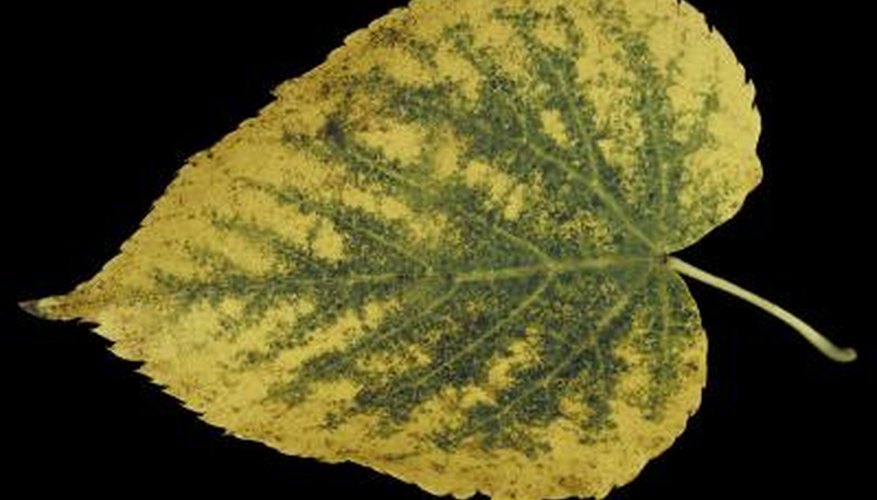The lime trees native to England are not the citrus-fruit-bearing kind, but long-living deciduous trees in the genus Tilia, also known as lindens or basswood trees. There are about 30 species of trees in the genus, but two of the most common in England are Tilia cordata, or small-leaved lime, and Tilia platyphyllos, or large-leaved lime.
Lime Trees as Ornamental Trees
Besides growing naturally, lime trees in England are often planted as ornamental trees. Often they are planted in rows along paths or roadsides, and their hardiness and high tolerance for pruning means they can be cut back as necessary so as not to block the path. In addition, they give off a pleasant odour during flowering that adds to their popularity as ornamentals. One drawback to English lime trees is the sticky "honeydew" that drips from them in the summer.
- Besides growing naturally, lime trees in England are often planted as ornamental trees.
- Often they are planted in rows along paths or roadsides, and their hardiness and high tolerance for pruning means they can be cut back as necessary so as not to block the path.
The Long Life of Lime Trees
Like the sequoias of North America, the lime trees of England are known for their ability to live for many years. One individual tree in Westonbirt, Gloucestershire, is thought to be about 2,000 years old. Although lime trees can grow as high as 100 feet tall, the Westonbirt lime is actually a fraction of that, due to years of pruning that have encouraged it to grow wide rather than tall.
Medicinal Applications of Lime Trees
In traditional medicine, the leaves and flowers of the lime tree have been used to treat a variety of medical conditions. Their purported sedative properties have led to use as a treatment for insomnia, often prepared as a tea. A similar tea has been used to treat the symptoms of respiratory infections, due to reports of expectorant and antiseptic effects. Lime tree preparations have also been used as digestive aids, sometimes using the inner bark as well as the leaves and flowers of the plant.
- In traditional medicine, the leaves and flowers of the lime tree have been used to treat a variety of medical conditions.
- Lime tree preparations have also been used as digestive aids, sometimes using the inner bark as well as the leaves and flowers of the plant.
Industrial Uses of Lime Trees
Because the wood of lime trees is exceptionally soft and workable, it has long been used in manufacturing. Items such as wood floors, cabinets and even the bodies of electric guitars are made from the wood of the lime tree. On the Janka Hardness Scale, used to measure the hardness of wood, lime trees have a rating of 410, compared with 1,630 for the red pine and 3,220 for ebony.
